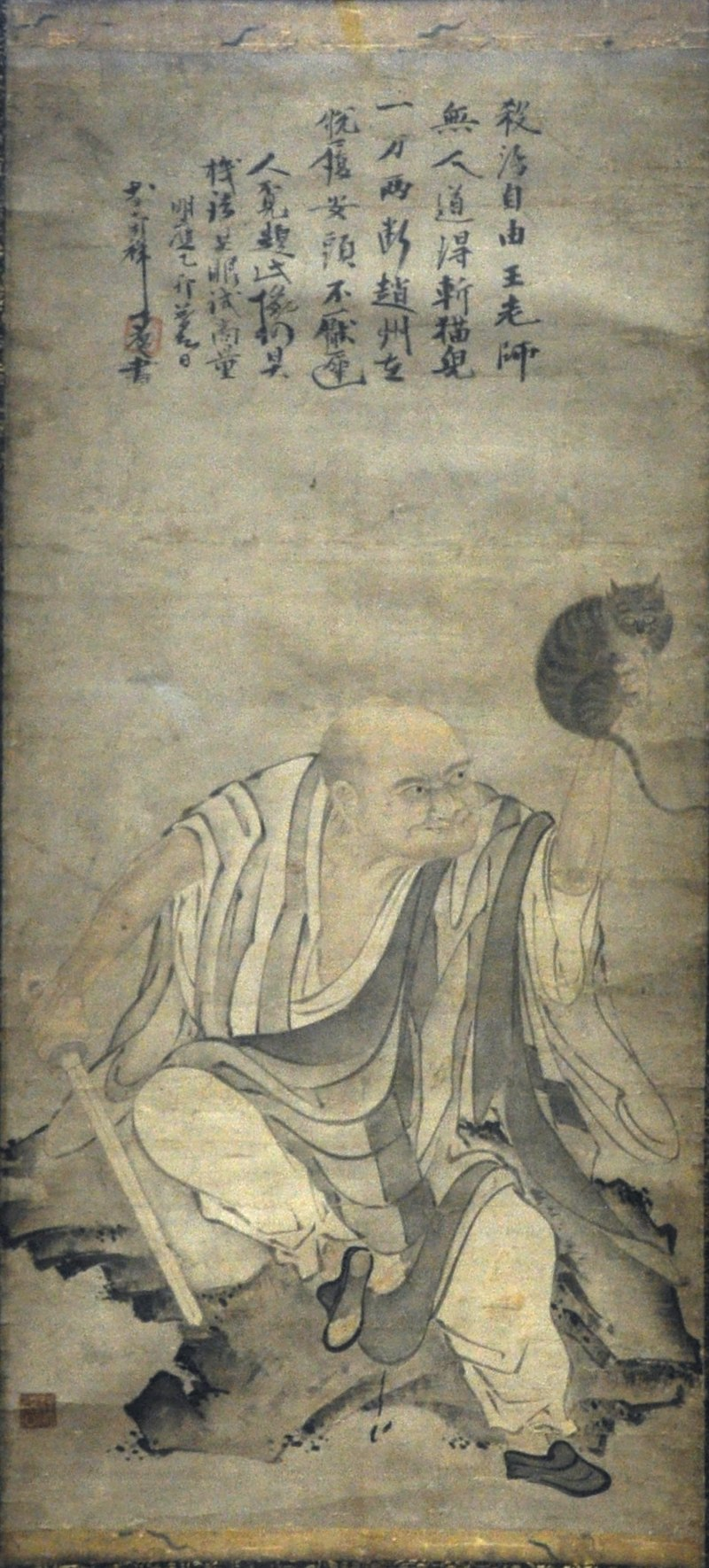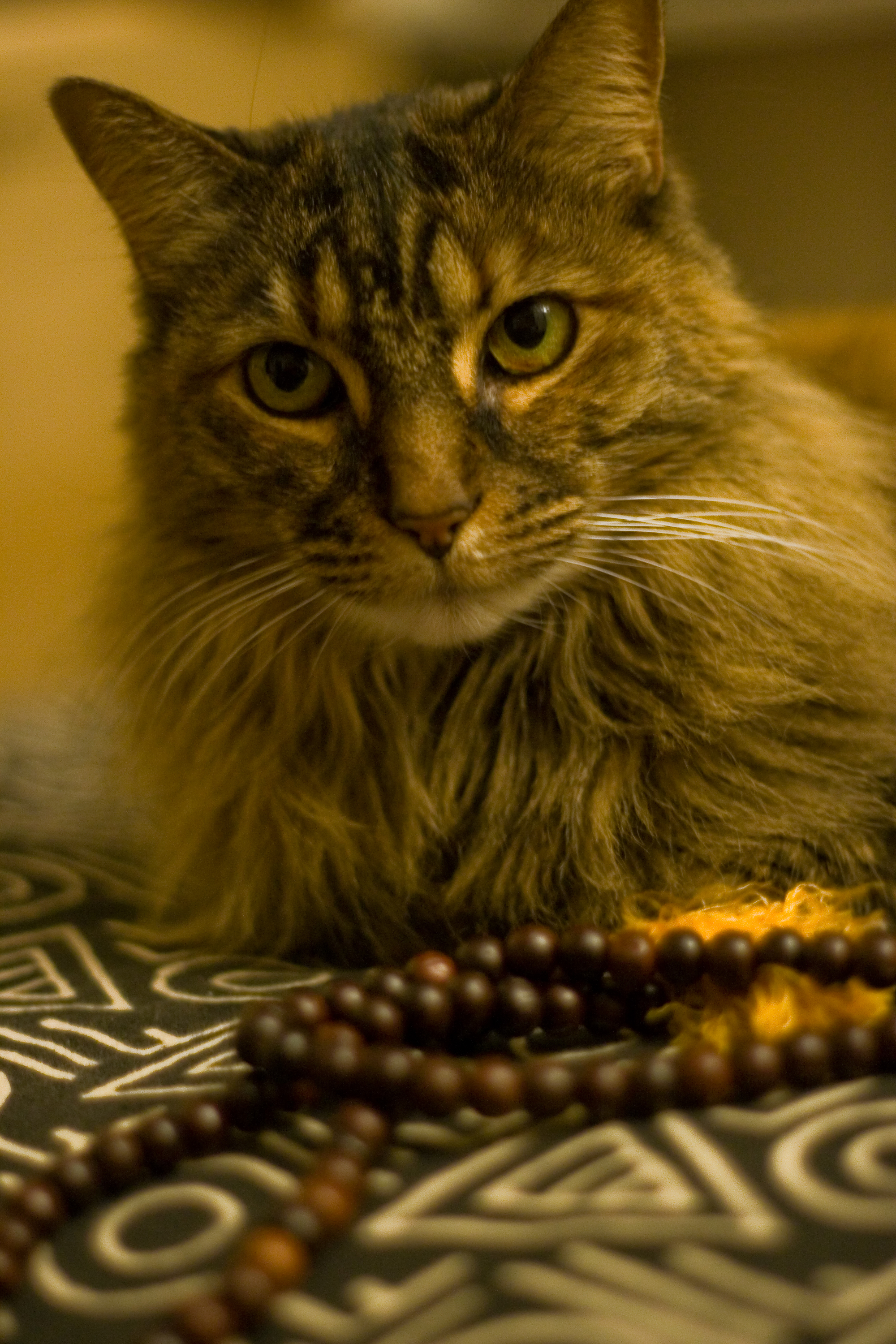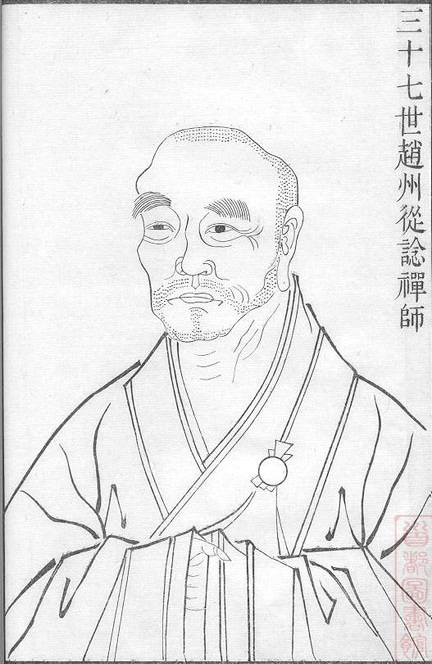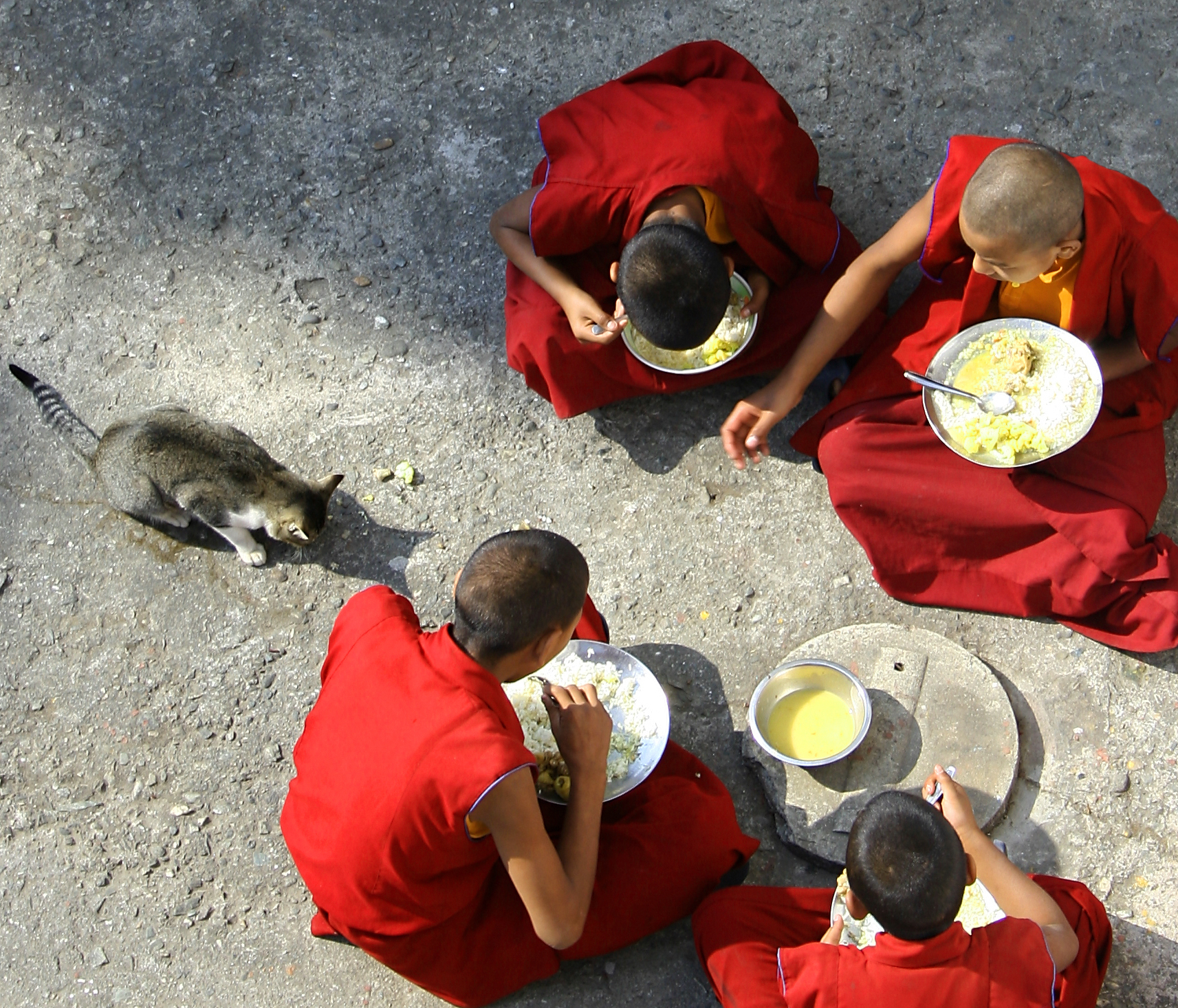Are You Prepared To Save A Life?
You can find yourself in a critical situation without warning. Is Zen practice preparing you?
Here’s a dharma talk I gave to the Village Zendo on September 5, 2024, about the classic koan, “Nansen kills the cat.” The first couple seconds of the video were cut off, sorry. There’s a written version below.
At the monastery on Mount Nansen, the monks of the eastern and western halls were arguing about a cat. This was late morning sometime around the year 830, in southern China. It was a cold winter, the monks didn’t have much to do. They were gathered in the kitchen, the warmest place in the monastery, and their boredom and isolation had boiled over and they started some argument about this cat. The abbot, Master Nansen, heard them. He stormed in and grabbed the cat. He picked up a big cleaver from the kitchen counter and said, “If you can say a word of Zen, I won’t kill it.” All the monks froze. He looked around. There wasn’t a word. He pinned the cat to the counter and THUNK cut it in half. Its hind legs, disconnected, twitched. Its pink guts fell on the floor in a tangle, jiggling. The monks stared. One of them ran out the door and threw up in the snow.
What were these stupid monks arguing about? Who should feed the cat? Whether a cat belongs in a Zen temple?
In a commentary, Tenkei said they were arguing over whether the cat has Buddha-nature or not. If so, Master Nansen’s teaching cut through that argument. No Buddha-nature, no not-Buddha-nature. No cat. Or as Dogen said, Nansen didn’t cut through the cat, he cut through “Buddha”. I hope the stupid monks got the message. The poor cat didn’t decide to be an example in a philosophy lesson. It had sneaked into the monastery one night, following the smell of the mice who lived in its walls in the winter, eating the barley from the temple storehouse. The cat had been skittish at first but it came to trust the monks. And Nansen murdered it.

Here’s a 15th-Century Japanese painting of Nansen and the cat. He has a nice sword here, but why does a monk have a sword? I think he used a kitchen knife.
Did Nansen actually do this? Or did he maybe pantomime it? I’ve read essays on this koan that say this ancestor we revere wouldn’t actually murder a cat to teach his students. Wansong wrote this 250 years after the incident:
Eminent Xin of the Liao Dynasty criticized Nansen’s group for killing a living being, committing wrongdoing. Head Monk Wen, on the other hand, helped Nansen out, saying, “An ancient text has it that he just made the gesture of cutting—how could he have simply cut it in two with one stroke, sending fresh blood gushing?” In these two critiques of the ancestor, Mr. Wen’s fault is the graver, whereas Mr. Xin’s fault is the lesser.
In other words, according to Wansong, go ahead and say it was wrong to the kill cat, but don’t say he didn’t really do it!
Gerry Shishin Wick agrees, he said, “Contrary to the opinions of some modern Zen teachers, that knife did cut the fur, the skin, the muscle, and the viscera.”
Why are these people insisting Nansen really killed the cat? This is about the stakes of our practice. We spend thousands of hours staring at the floor. Are we or aren’t we training ourselves to respond in life or death situations?
I’ve been rock climbing for a few years and I do it in a style called “trad” or “traditional” lead climbing, which is fairly dangerous. Trad climbing involves constant risk assessment and managing your fear.
(Note to readers: this section is best watched on video. I used props.) When I’m leading a climbing route, I climb up a more-or-less vertical cliff. I wear a harness and I tie the rope to it, which will catch me comfortably if I fall. My partner has the rope going through a belay device. The belayer can slowly give out slack, or when I fall my belayer uses the device to catch me. The device is attached to the belayer’s harness so their weight counters my weight and stops my fall.
But in the beginning, the belayer can’t do anything, because I’m climbing from next to the belayer to above them. The first 10 or 15 feet of a trad climb is always totally unprotected, the rope and the belayer are useless, you just must not fall. As soon as I can, I find a crack in the rock and I place some piece of protection there. Usually it’s a cam. I carry a dozen of these with me as I climb, in different sizes. They work like harpoons: you retract the lobes, stick the cam into the crack in the rock, and then it’s stuck. Later when the climb is finished, you remove the cam by retracting the lobes again and pull it out.
As I climb up the cliff, I place protection as I go, and clip the rope through it. So if I fall, the belayer locks their belay device, and I fall down past my last piece of protection and eventually the rope stops me. Hopefully, I stop before I hit a ledge or the ground and get hurt. As I climb above the last piece I placed, I always risk a fall at least twice that distance. If I climbed 5 feet above my last piece, I’ll fall 10 feet. Actually, it’s always much more than twice as far, because the rope is elastic and there’s always slack in the rope, and I might pull my belayer off the ground some distance before I stop.
The worst risk is when I climb through a section of rock where there’s no good cracks for placing protection, or the cracks are the wrong shape. I might place a cam into a funny-shaped crack and think it’s the right size cam and it will hold me, but it’s not and it pops out and I fall much farther. This has never happened to me, but it happens to climbers all the time, and it’s my main fear when I’m climbing.
Here’s a video of me lead climbing a route that was easy and chill for me. When the video starts I already have one cam in the rock. I make a move, find the next good crack, place another cam, and keep climbing:
Being afraid of falling and injury when I’m climbing is a fascinating state of mind! In regular life I’m not physically afraid, hardly at all—driving a car or biking in the city are the most dangerous things I do besides climbing, but I’m so used to those I’m not afraid. Besides, climbing is special: we like to say it’s “the slowest dangerous sport.” You can be clinging to the wall in some precarious place, trying to decide what to do next, feeling afraid, for quite a while. So you can watch your scared mind at work, see what it does, and learn to manage it. When I’m afraid, it’s hard to focus on problem-solving. It’s hard to focus on how to minimize risk and complete this climb. I get distracted by worrying about falling, wishing I hadn’t started the climb, feeling hopeless.
That’s the Zen of climbing for me: observing how fear works, and learning how to redirect my attention to the actual climbing. There’s a handful of techniques: focus on the breathing, breathe loud and slow. Focus on the senses, the feel of my fingertips and toes on the rock. Look around, look down, acknowledge the height I’m at. “Don’t look down” is terrible advice. There are mantras, like “I’m safe right now,” or my favorite, “Let the body climb.” These days all the climbing coaches are saying you should meditate! And of course I bring my 20 years of attentional training to climbing, but I also use tools that are specific to climbing, and specific to fear.
Last month I was trying one of the most challenging trad lead climbs I’d ever done, and my mentor Dustin was belaying me and coaching me from the ground. Two things happened that rattled me. First, when I was starting the climb, before I’d placed any protection, when I was just free-soloing the first 10 feet of the climb, my hand slipped. I didn’t fall, but it totally rattled me, and I climbed down to the ground and breathed for a couple minutes. I climbed up again, past that point, placed a few pieces of protection, and got past an overhanging roof. I was sure that was the crux, the hardest part of the climb, so I stood on a little foothold for a while, shaking out my forearm muscles, catching my breath, calming myself down. I thought I could just cruise up the rest of the climb and I was feeling good.
Then came something that really threw me: I started to climb up again, I placed two more pieces, and arrived at the true crux. It turned out the hardest part was higher up. I could see what I needed to do, I needed to step on a tiny foothold, then lunge leftward and catch a big handhold. It was a fairly easy move, but committing: I was practically jumping for the hold. If I didn’t catch the handhold I would definitely fall. And because I was now 5 feet above my last cam, I’d fall 10 feet minimum, more likely 20 feet.
I felt like I had two minds. The thinker said, it’s a longish fall but safe, my last cam is totally solidly placed in the crack, I want to try this move. C’mon, try it!! And my body said, “No.” At the point of no return, I froze.
I repeatedly climbed up to the crux, hesitated, and climbed back down to a ledge below my last cam. I couldn’t calm myself down and I started to give up. I asked Dustin to pull the rope tight so I could hang from my cam. If he had, I would have ruined my chance to claim a clean ascent. Dustin said, “I can do that, but are you sure? Do you want to try one more time?” Just saying a word, and hearing him be calm and encouraging, gave me the oomph I needed. I took a couple deep breaths and tried one more time. As I approached the crux and hesitated again, Dustin yelled up, “Increase the tempo!” I lunged for the next hold and latched it, and finished the climb.
Here’s a time lapse video Dustin made:
What I love about climbing is how it makes my mind visible. I knew what had rattled me: I slipped near the start, and I was surprised by the second crux. I knew what I had to do, and I knew whether I was hesitating or committing to do the move. In the rest of my life there’s so much … cloudiness. What must I do or say that I’m so afraid of, I don’t even let myself see it? How am I hesitating right now?
What about you, is there something you should do but you’re hesitating? Are you admitting to yourself that you must do this thing, or are you trying to ignore it?
Sometimes the crux comes at us visibly, like Nansen with a cleaver. It says, “Say a word!” Sometimes it’s easier to ignore. Either way, if we stand frozen and mute like Nansen’s monks, the cat dies. A mentor or a teacher is crucial in that moment. Because I trust Dustin’s wisdom, when he shouted up “increase the tempo!” it broke through my hesitation and I did the move with my whole being. Zen teachers in other areas of my life have given me the courage to unfreeze myself. What’s your crux right now? Who can help you unfreeze yourself?
When Nansen killed the cat, his wisest student Joshu was away, traveling. He returned that afternoon. He shook the snow from his wool cape and hung it up at the monastery entrance. He kicked off his heavy shoes and put on his straw sandals, and went in to say hello to Nansen. Nansen told him what had happened that morning. Joshu took off his sandals, put them on his head, and walked out. Nansen called after him, “If you’d been there you could’ve saved the cat!”
What’s it mean, sandals on the head? It was 1200 years ago and no one’s sure anymore. Maybe sandals on the head symbolizes death: people were buried barefoot and maybe their sandals were placed above their heads in the grave? Or maybe people put their sandals on their heads at funerals, or maybe that interpretation is just a garbled version of the first interpretation? Either way, Nansen tells Joshu a story about death, and Joshu’s gesture is just an acknowledgment. “Yes. Death. Impermanence. Nothing lasts.”
We don’t have to know what Joshu’s gesture meant exactly. The point is, he acted. He didn’t hesitate, he responded. If he’d been in the kitchen that morning, when all the other monks froze, Joshu’s gesture would have been enough to save the cat.
The worst climbing accident I’ve seen was a couple months ago. I had started leading an easy climb at a popular area, there were a few other climbers on routes nearby. I was about 25 feet up, when I heard the obvious sound of a climber falling near me: the jangling of his gear and the thud of his body hitting the rock. Someone screamed, and someone else shouted, “Call 911!”
I was not out of danger myself, so I deliberately did not look to the side, I didn’t want to see the accident until I was safe. I looked down, I saw that I could safely climb the 25 feet down to the base, so I did that, pulling my protection out of the cracks as I went until I was standing next to my belayer on the ground.
Then I looked over, about 50 feet to my right there was a climber lying on a ledge, a few body-lengths above the ground. I learned later that he’d been leading a hard, overhanging climb, he fell, and two or three cams that he placed popped out of the rock so he fell almost all the way back to the ground. He tumbled, hit his head, his helmet broke off, he hit his head again, and came to a stop on this ledge where he was lying unconscious. By the time I looked there was already a climber who had reached him and was checking his pulse and trying to talk to him.
I coiled my rope and moved my pack out of the way and waited for rangers to arrive. I wanted to be helpful. I was curious, too. How badly was the climber hurt? How was the rescue going to go? What more could I learn about the accident?
Just minutes after the accident a few rangers showed up. One of them, a young slim guy, took charge. He was brisk and friendly, almost cheerful. He was enjoying moving fast and putting his skills to work, enjoying his mastery. He looked up at the climber, asked the other people at the cliff base: what’s his name? Morgan. What happened? He fell and hit his head. All these ropes hanging from the wall right now, what’s this attached to? What’s that attached to? This ranger, this Joshu, he figured out what he needed to do, what resources were available, and made a plan. By this time a dozen climbers had gathered at the base, so he gave us all jobs. After a couple minutes he had three belayers managing three ropes, he’d tied himself to one of the ropes and climbed up to join Morgan. Morgan was somewhat conscious now, and Joshu introduced himself. He didn’t say, “I’m so sorry this happened to you,” he didn’t say, “Oh my god look at all this blood.” Two other rangers arrived with a stretcher. Joshu and another climber lowered Morgan from the ledge down into the stretcher, with the three belayers all working in sync, with Joshu instructing them all.
Once Morgan was in the stretcher on the ground, we needed to carry him down to the road where the ranger’s pickup truck was waiting. Joshu told us not to just pick up the stretcher and walk down to the road with it, because the ground was rocky and slippery with leaves, we could stumble and drop Morgan. Joshu said, “We’re going to do the caterpillar thing.” As if everyone was familiar with this technique and everyone knows it’s called the caterpillar. We lined up in two rows and picked up the stretcher, then passed it to the next set of people downhill. Then the uphill people ran around behind the backs of the people holding the stretcher, so they became the new downhill people, and the uphill people passed the stretcher down to them. It was fun, like a bucket brigade or school game. Whenever I was holding the stretcher I looked down at Morgan’s face. He was bloody and it seemed like his nose was broken, and he was going in and out of consciousness, but he was alive and talking.
The caterpillar reached the road and we loaded Morgan into the ranger truck, and off he went. I think the truck brought him to a helicopter, which brought him to a hospital. I’ve heard he was still conscious when he reached the hospital, so I assume he’s ok.
I noticed about myself how unfazed I was. Sure, it’s the worst accident I’ve seen, but I wasn’t surprised about anything. I know that this is exactly the kind of accident trad climbers have. It was a reminder how important it is to place pieces of protection correctly, so they’ll hold me when I fall, but I already knew that. I wasn’t upset, I was just curious.
There’s a coldness to me that I’ve long disliked about myself. I’m not very sympathetic to strangers, I don’t usually cry at movies. But after this experience I’ve decided it’s ok—I still act helpfully. In fact, my coldness can be an asset, it seems to make me good in emergencies.
In contrast to Joshu and the other climbers on the scene, there was one young woman who had completely lost it. I think she and Morgan were both part of a group of climbers who’d come up from the city for the day. She was walking around the base of the cliff sobbing. She was crying so hard that two of her friends had to help her walk to a flat spot, out of the way, where she could sit down and cry while they held her. The whole time we were rescuing Morgan, 20 or 30 minutes, she was off to the side crying with her two friends.
I don’t know her, I don’t know why the accident shocked her in a way it didn’t shock me. Maybe she was very close to Morgan, maybe it was her first time climbing outside and she didn’t know how dangerous it is, wasn’t prepared for someone to get hurt. I don’t blame her. But she couldn’t save the cat.
I’m going to keep climbing for many years and I’ll see more accidents. I’m taking some classes soon, like Wilderness First Aid, so I can be more helpful when that happens. If someone I know gets hurt, I won’t be so calm, but I think I can hold it together. I’m more confident about that now.
When you read about Zen it’s easy to misunderstand the message. We can think, Zen practice has no goal. The Heart Sutra says, “no path, no wisdom, no gain”. Huineng said, “there’s no mirror to polish and no dust to fall on it.” Dogen says, “we practice because we’re already enlightened.” But practice has an effect. You know that—it has an effect on you right now, and over the decades of your practice it will transform you. It’s crucial to ask yourself, how are you training yourself? How are you changing?
When Nansen comes with his cleaver, you’ll only have a moment to respond. Will you freeze, or will you save the cat?


